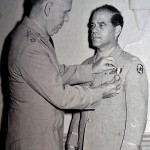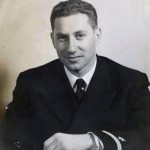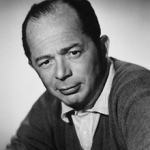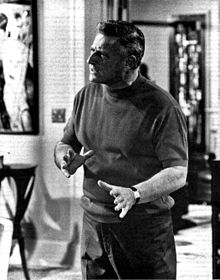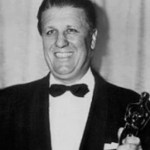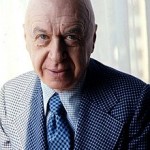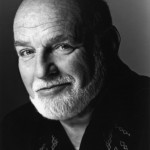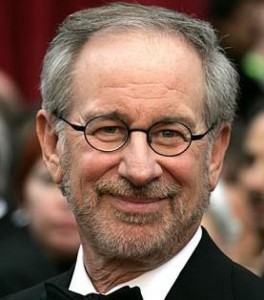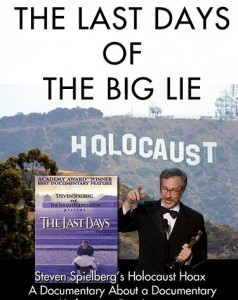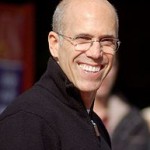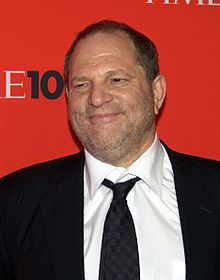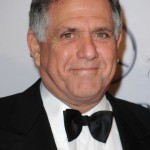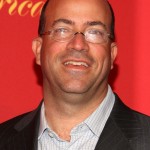News and Views on the 70th Anniversary Commemoration
Billionaires Steven Spielberg and Ronald Lauder join forces to push for big success of 70th Anniversary
The Steven Spielberg Shoah Foundation (Institute for Visual History and Education) partnered with the World Jewish Congress to create a global communication and education program they call “Auschwitz: The Past is Present.”
A part of the program is to bring at least 100 survivors of Auschwitz to Poland for the Jan. 27, 2015 official observance. The two organizations have jointly put forth the following statements:
- Auschwitz is the world’s biggest Jewish graveyard
- Auschwitz is the primary symbol of the Holocaust
- The Holocaust is the biggest organized mass murder in human history
- An estimated 1.1 million people, most of them Jews, but also Poles, Sinti and Roma, and Russian POW’s were murdered in Auschwitz
Are any of these statements literally true? In the opinion of the jan27.org Committee only the second one is true, which is the reason we restrict our efforts here to Auschwitz. If Auschwitz is not true, can any of the rest of it be?
Three American-Jewish Billionaires join to keep memory of Holocaust alive
By Noah Klieger. Three leading American Jews have decided to undertake the important mission of preventing the world from forgetting. Filmmaker Steven Spielberg, World Jewish Congress President Ronald S. Lauder and Israeli-American media tycoon Haim Saban have joined the organization coordinating the memorial ceremonies marking the 70th anniversary of the liberation of the Auschwitz-Birkenau concentration and extermination camps by the Soviet Army.
Since 2006 memorial ceremonies and rallies are held every year at the site of the biggest Nazi death camp, where some 1.3 million Jews, 85,000 Polish people, 75,000 Soviet prisoners of war and 23,000 gypsies were murdered. [This has never been proved with even a shred of evidence. See “The Insanity” page for further enlightenment]
A Brief History of how the Masters of Make-Believe made the world believe in Death Camps
Auschwitz as we know it is a Hollywood creation
by the jan27.org Committee
Today’s Hollywood Jews are the heirs of the original crop of wartime Hollywood producers and directors who were called into service by the U.S. Army to “document” the concentration camps. Although they were not allowed into Auschwitz-Birkenau or Majdanek which were under the tight control of the Soviet Union, they actually had better film-making opportunities at the camps located in Germany proper which had suffered from intense American bombardment. With supply lines and infrastructure smashed to pieces, horrific scenes in these camps caused by hunger, poor hygiene and disease were not hard to find in 1945.
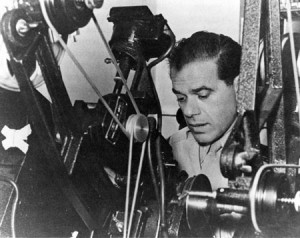
To tell the story, let’s go back to the beginning when George C. Marshall, U.S. Army Chief of Staff, called upon award-winning Hollywood director Frank Capra to head a special section on morale to explain to soldiers “why the hell they’re in uniform.” Marshall explained to Capra that these were not to be “propaganda films like those created by the Nazis and Japan, but sensitive and objective troop information films.” That, however, they were not.
Capra worked directly under Marshall, bypassing the Signal Corps, the Army’s film-making/propaganda department. During his first meeting with General Marshall, Capra was told his mission:
“Now, Capra, I want to nail down with you a plan to make a series of documented, factual-information films – the first in our history – that will explain to our boys in the Army why we are fighting, and the principles for which we are fighting … You have an opportunity to contribute enormously to your country and the cause of freedom. Are you aware of that, sir?” [Frank Capra, The Name Above the Title: An Autobiography, Capra, McMillian 1971, p. 326]
Capra went on to make the seven-episode Why We Fight series, which is full of inaccuracies and false statements about National Socialist Germany and it’s leadership – as well as the film, The Negro Soldier in 1944. Animated charts were created by Walt Disney and his animators. A number of Hollywood composers wrote the background music.
Officials made efforts to see that the films were seen in theaters throughout the U.S. They were translated into French, Spanish, Portuguese, and Chinese for use by other countries. Winston Churchill ordered that all of them be shown to the British public in theaters. They are today often broadcast on television and used in schools.
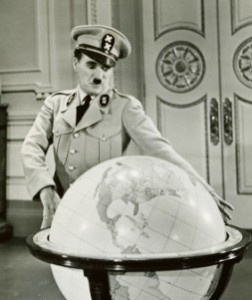
Even earlier, Hollywood Megastar Charlie Chaplin, a communist, made The Great Dictator, satirizing the German Fuehrer as a megalomaniac who wanted to own the whole world. Making a comedy about Adolf Hitler in 1939 was seen as highly controversial, but Chaplin was determined to do it. It was a huge box-office and financial success.
Budd Schulberg, a Jewish film writer, son of producer/director B.P. Schulberg and nephew of Sam Jaffe on his mother’s side, was assigned during the war to the Office of Strategic Services (OSS) in John Ford‘s documentary unit. His job was to gather evidence against “war criminals” which led him to arrest Leni Riefenstahl at her chalet in Austria for questioning.
Ford rose to become a top adviser to OSS head William Joseph Donovan, who wanted a psychological study of Adolf Hitler that could be used if/when he was captured alive. Walter Langer, a Jewish psychologist who never met or talked to the Fuehrer was taken on by Donovan and wrote up an imaginative “profile” of Hitler as a dirty-minded derelict. [See here]
Billy Wilder was born in 1906 in Poland to a Jewish family. After high school he went to Berlin as a journalist, then screenwriter; in 1933 he moved on to Hollywood where he became highly successful.
In 1945, he directed a propaganda film Death Mills (Die Todesmühlen in German), for the Psychological Warfare Dept. of the US Department of War. Intended to be shown first to German audiences, its purpose was to indoctrinate them to believe that the wildest “atrocities” imaginable had been committed by the National Socialist regime and the SS.
Stanley Kramer was born in 1913 in New York City to Jewish parents who separated when he was very young. His mother and uncle Earl Kramer both worked at the NY offices of Paramount Pictures and Universal Pictures respectively.
Kramer wrote a weekly column for his college newspaper (NY University), and upon graduation was offered a paid internship in the writing dept at 20th Century Fox. Kramer went on to become a top director in Hollywood who took on controversial subjects, such as racism and fascism, as in Judgment at Nuremberg. Of its 1961 world premier in Berlin, Kramer wrote:
[T]he film went on, and when it was over there was a deafening silence. . . . The film was totally rejected [by the Berlin audience]: it never did three cents’ business in Germany. It played so many empty houses it just stopped. (Stanley Kramer: Film Maker by Donald Spoto, 1978, Putnam, p. 229)
The film showed newsreel footage of wartime Germany, questioned the legitimacy of the Hitler government and indicted the German people.
George Stevens was already a major Hollywood director when he joined the U.S. Army Signal Corps and headed a film unit from 1943 to 1946, under General Eisenhower. He shot footage of the liberation of Paris and the meeting of American and Soviet forces at the Elbe River, as well as “horrific scenes” from the Duben labor camp and the Dachau concentration camp. Stevens also helped prepare the Duben and Dachau footage and other material for presentation during the Nuremberg Trials.
In 1959, he directed the film version of The Diary of Anne Frank, which was based on the play of the same name.
Otto Preminger was born in 1905 in Bukovina (Austria-Hungary at the time) to Jewish parents. Among his very many hit films, he produced and directed Exodus in 1960. Widely characterized as a “Zionist epic”, the film was enormously influential in stimulating Zionism and support for Israel in the United States.
John Schlesinger, born in 1926 into a middle-class Jewish family in London, became an English film and stage director, and actor. He directed the 1976 Marathon Man, starring Jewish actor Dustin Hoffman, about “Nazi” war criminals hiding in America after the war.
Alan J. Pakula was born to Polish-Jewish parents in 1928 in Bronx, NY. He attended Yale Univeristy where he majored in drama, then began his Hollyoood career in the 1950’s. He produced the anti-racist To Kill a Mockingbird which was nominated for best picture in 1962, and produced and directed the “holocaust hit” Sophie’s Choice, released in 1982. Pakula adapted Wm. Styron’s NOVEL for the screen—yes, a completely fictional story, although moviegoers are encouraged to think it really happened, that at Auschwitz “Sophie” (played by the very popular Meryl Streep) was forced by a cruel SS man to choose which of her two children would go to the gas chamber and which would proceed to the labor camp with her. Nothing like that ever happened.
* * *
We now jump forward to the current crop of Hollywood Jews involved in the 2015 Holocaust Memorial Day commemoration at Auschwitz-Birkenau M&M. They have created much of the programming and fanfare for the 70th Anniversary year (Jan 1945-Jan 2015). At the top of the list can only be:
Steven Spielberg, born in 1946 in an Orthodox Jewish family. He began making films with his friends in his early teens. His first directorial hit came in the mid-1970’s with Jaws, the fantastic success of which made Spielberg a household name and one of America’s youngest multi-millionaires. His films Close Encounters of the Third Kind and E.T. The Extra-terrestrial carried the message that people who were “different” should not be feared, and may even be superior.
In 1985, Spielberg released The Color Purple about a generation of empowered African-American women during depression-era America. Whoopi Goldberg and Oprah Winfrey starred in this huge critical and box-office success.
His “holocaust” film came along in 1993 – Schindler’s List, based on the NOVEL Schindler’s Arc by Thomas Keneally,which was itself loosely based on the real-life character of NSDAP member Oscar Schindler. No doubt because of the subject matter, the film gave Spielberg his first Academy Award for Best Director and also won Best Picture. Spielberg used the massive profits to set up the Shoah Foundation, a non-profit organization that archives filmed testimony of “Holocaust survivors.” In 1997, the American Film Institute listed Schindler’s List among the “10 Greatest American Films ever Made” (#9) which moved up to (#8) when the list was remade in 2007. ??!! A look at the names of the members of the American Film Institute would probably explain that.
Amistad was another anti-White film based on a kinda-sorta true story (like Schindler’s List), about an African slave rebellion. Following that, Saving Private Ryan glorified the WWII Allied landing at Normandy and the entire “good war” theme, and won him another Academy Award. Spielberg’s second film about Jews was Munich, about the events following the 1972 deaths of Israeli athletes at the Olympic Games. This film underperformed at the box-office.
Never mentioned anymore by Spielberg, though it won an Academy Award for best Documentary, is his 1998 The Last Days, featuring interviews with five self-identified survivors of the deportation of Hungarian Jews to Auschwitz in 1944. Revisionist and video-maker Eric Hunt has shown this documentary to be full of false claims and downright lies in his critical video which he named The Last Days of the Big Lie. Hunt even brought a lawsuit against Spielberg and Irene Zisblatt. who is featured in the film, because Spielberg’s film is advertised with the tag-line “Everything you are about to see is true.” Eric Hunt proved it wasn’t (not even close).
Spielberg’s estimated net worth is $3 billion.
Spielberg’s hand-picked fellow-members on this year’s Jan. 27 Holocaust Remembrance Day all-Jew program committee are:
David Geffen, son of Eastern European Jewish immigrants, is openly gay. Having never graduated from college, he began his business career in Los Angeles by tampering with the mail! He worked in the mail room of the company to which he was applying for a higher-level job that required a college degree. He intercepted and “modified” the letter sent from UCLA informing the company that he did not graduate from there to falsely stating he did, then passing the letter on through to the company. Oh, but that’s excused for him because he was born in 1943, making his parents holocaust survivors of some sort or other. Geffen is worth an estimated $6 billion.
Jeffrey Katzenberg is also the son of Jewish parents; his father was a NYC stockbroker. He is CEO of DreamWorks Animation, co-founded with Spielberg and Geffen, and was chairman of Walt Disney Studios from 1984-94. He began his career as assistant to Barry Diller, Chairman at Paramount Pictures. He is considered one of the Democratic Party’s top national fundraisers. His estimated net worth is $1 billion.
Harvey Weinstein, Jewish, son of Max Weinstein, a diamond cutter, and Miriam (Postal), he grew up in New York City. He’s co-founder of Miramax Films and The Weinstein Company. He has been accused of being down and dirty in his business dealings, has shown a violent temper, and been involved in numerous lawsuits. Weinstein recently said, in regard to the Charlie Hebdo attack, that “It draws a parallel to the horrors of the Nazis and their mad attempt at Kristallnacht to destroy books.” Destroy books? Harvey needs to brush up on his “Nazi” history.
Les Moonves, another NYC Jew who was attracted to show business. He worked his way up in television and became Chairman and CEO of CBS in 2003, at which time it was the most watched television network. Moonves says he is a great-nephew of David Ben-Gurion, first Prime Minister of Israel. He earned $65.4 million in 2013, the second most highly paid Executive.
Jeff Zucker was born into a Jewish, upper-middle class family near Miami, Florida, who gave him a religious upbringing. Zucker was head of NBC for a number of years until he was appointed President and CEO of CNN Worldwide in Jan. 2013.
Diane von Furstenberg was born in Brussels, Belgium to Jewish parents. Her father was a Romanian immigrant; her mother was Greek and spent some time at Auschwitz before Diane was born. Diane became famous as a fashion designer, married a German prince whose mother was an heiress to the Fiat automotive fortune, later divorcing him to marry American media mogul Barry Diller (mentioned above as boss of Paramount Studios).
This brings us to the end of our brief history of the marriage between Jewish Hollywood and the Jewish Holocaust. Much more could be written but we ask you to ponder the meaning of just this much for awhile.


